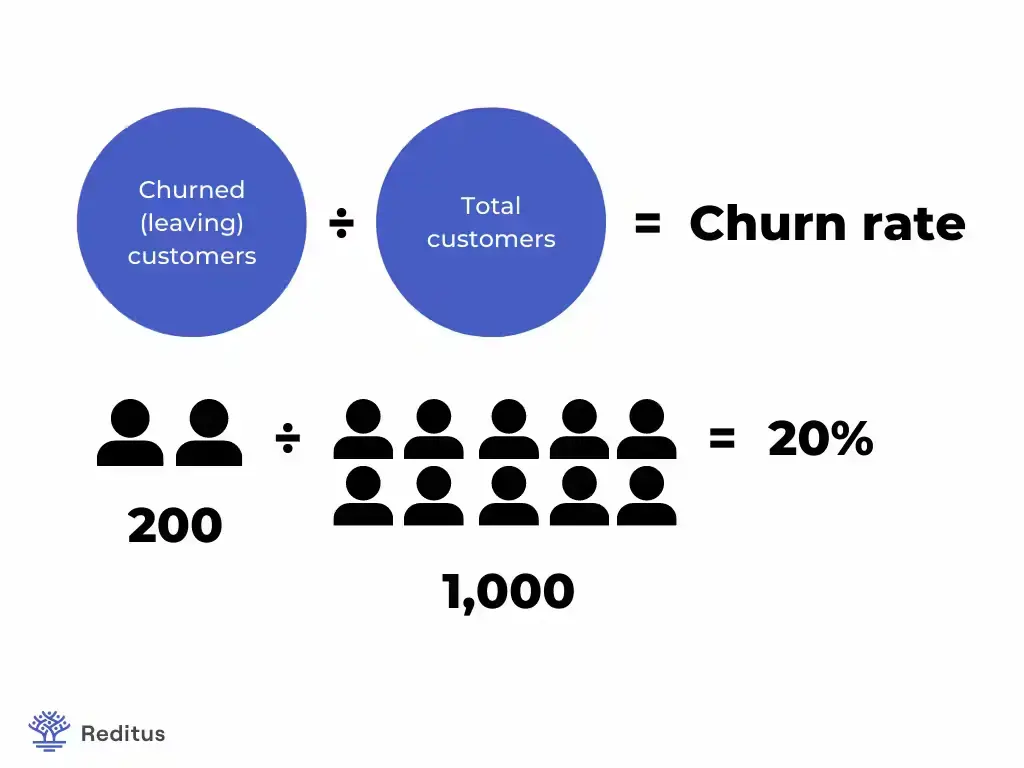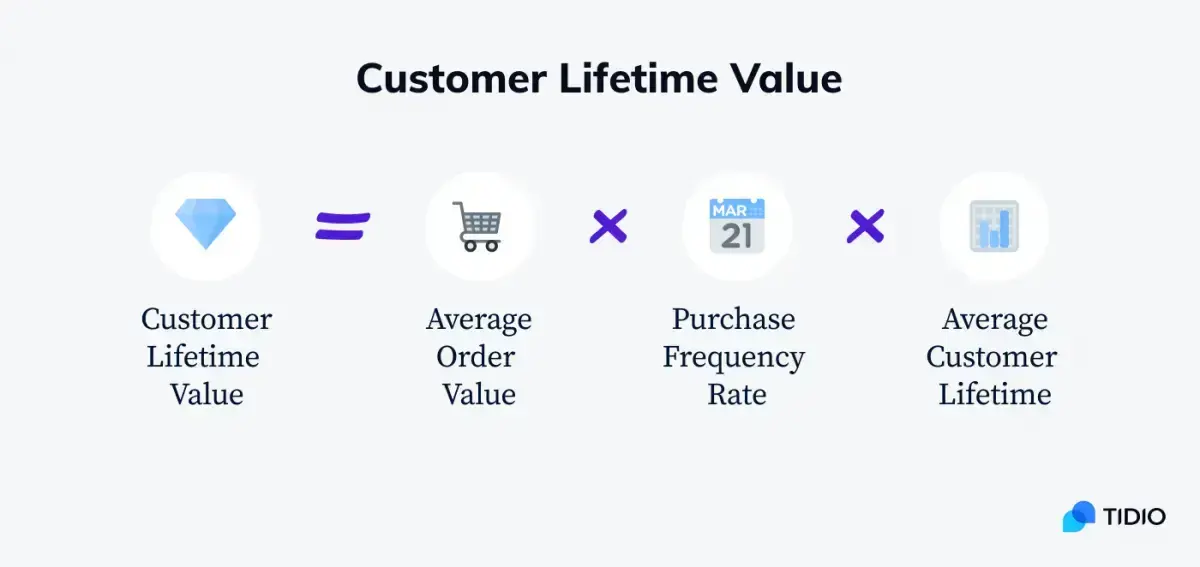You focus heavily on attracting new customers through expensive paid advertising campaigns, but how much time, energy, and resources do you devote to keeping the customers you already have?
*Updated 01/03/2025
Even if you have a strategy in place now, how do you know if your loyalty marketing efforts are truly paying off? Measuring the right metrics is the key.
You could start by implementing a simple customer loyalty program for e-commerce to improve customer retention and reduce churn rates significantly, but turning occasional shoppers into lifelong supporters takes a lot more work.
In this guide, I’ll walk you through four vital loyalty marketing metrics that help you evaluate success, optimize strategies, and ensure your customers remain valuable assets to your brand.
Shortcuts:
- Customer Retention Rate
- Churn Rate
- Lifetime Value
- Customer Loyalty Index
- Loyalty Marketing Metrics Tools
- FAQ: Loyalty Marketing Metrics

1. Customer Retention Rate: Measuring and Tracking Loyalty Success
A strong customer retention rate (CRR) is among the most important indicators of loyalty marketing success.
This metric reveals the percentage of customers who return to your business over a specific period, helping you understand what keeps them engaged and identify areas where improvements are needed, such as customer support or product quality.
To calculate your CRR, follow these steps:
- Determine:
- The number of customers at the beginning of a period.
- The number of customers at the end of the period.
- The number of new customers acquired during that period.
Use the formula:
CRR = ((Customers at End of Period - New Customers) ÷ Customers at Start of Period) × 100
For example, if you started with 200 customers, ended with 250, and gained 70 new customers during the period, your CRR would be: CRR = ((250 - 70) ÷ 200) × 100 = 90%
To improve your CRR, focus on enhancing customer touchpoints like communication and support.
Tools like an easy contact form can make it easier for customers to reach out, resolve issues, and stay connected to your brand—key factors in building long-term loyalty.
2. Churn Rate: Reducing the Number of Lost Customers

Source: Reditus
While customer retention tracks how many customers stay with your brand, churn rate reveals the flipside: how many leave.
This metric is crucial for loyalty marketing because it highlights the effectiveness of your customer retention strategy and identifies areas for improvement.
A high churn rate indicates that your business is losing a significant percentage of customers, often to competitors.
By monitoring this metric, you can uncover trends affecting customer loyalty and take steps to address them proactively.
To calculate churn rate, use either of these formulas:
- Churn Rate = 100 - Customer Retention Rate
Example: If your retention rate is 35.5%, your churn rate is 64.5% (100 - 35.5 = 64.5%) - Churn Rate = (Customers Lost ÷ Total Customers) × 100
Example: If you lost 50 customers out of 200, your churn rate is 25% (50 ÷ 200 × 100)
To lower your churn rate, focus on understanding why customers are leaving. Is it due to pricing, product issues, or lack of engagement?
Addressing these pain points with tailored loyalty programs, better support, or added perks can make a big difference.
For instance, tools like customer feedback forms can help you identify dissatisfaction early and take action before customers churn.
3. Lifetime Value: Analyzing What a Customer is Worth

Source: Tidio
Customer Lifetime Value (LTV) is one of the most critical metrics for measuring the success of your loyalty marketing efforts.
It quantifies a customer's total revenue during their relationship with your brand, factoring in their purchase frequency, average spend, and overall duration as a customer.
Why is LTV so important?
A high LTV indicates that your loyalty marketing strategies effectively retain customers and encourage repeat purchases.
It also helps you identify your most valuable customer segments, guiding marketing, sales, and product development decisions.
To calculate LTV, use the formula:
LTV = Average Purchase Value × Purchase Frequency × Customer Lifespan
For example, if your average purchase value is $50, customers purchase twice per month, and their average lifespan is 24 months, your LTV would be: LTV = $50 × 2 × 24 = $2,400
Knowing your LTV allows you to refine your loyalty program offerings. For instance:
- Offer exclusive rewards or discounts to high-value customers.
- Tailor email campaigns to encourage repeat purchases.
- Use data insights to prioritize retention strategies for top-performing customer segments.
Maximizing LTV ensures your loyalty program drives long-term growth and profitability.
4. Customer Loyalty Index: Strengthening Brand Commitment

Source: FasterCapital
The Customer Loyalty Index (CLI) is a simple yet powerful tool for measuring customer loyalty over time.
By focusing on three core questions, it provides valuable insights into how likely your customers are to remain engaged with your brand:
- How likely will you recommend our products or services to friends, family, or colleagues?
- How likely are you to make another purchase from us in the future?
- How likely are you to explore or try our other products or services?
Each question is scored on a scale (e.g., 1–10), and the CLI is calculated as the average of these scores.
A higher CLI reflects stronger customer loyalty, while a lower CLI signals the need for improvements in customer experience or loyalty programs.
To effectively use CLI in your loyalty marketing strategy:
- Regularly survey customers to track changes in their responses over time.
- Use CLI data to identify trends and areas for improvement in your loyalty program.
- Pair CLI insights with metrics such as retention rate and lifetime value to comprehensively view customer loyalty.
For example, if customers rate their likelihood of repurchasing low, consider adding incentives like exclusive discounts or loyalty rewards to encourage repeat purchases.
You can build stronger, longer-lasting customer relationships by acting on CLI insights.
Loyalty Marketing Metrics Tools

Tracking loyalty marketing metrics doesn’t have to be complicated. Modern tools and technologies can streamline data collection, analysis, and action. Here are some options to consider:
-
Customer Relationship Management (CRM) Software
- Platforms like Salesforce or HubSpot help track customer interactions, retention, and churn metrics.
- Benefits: Centralized data, customizable dashboards, and actionable insights.
-
Loyalty Program Platforms
- Tools like Smile.io or Yotpo simplify the creation and management of loyalty programs.
- Features: Reward tracking, customer segmentation, and automated communication.
-
Analytics Tools for Metrics
- Google Analytics can provide insights into customer behavior and retention trends.
- Advanced platforms like Tableau or Looker enable deeper analysis of customer lifetime value and loyalty trends.
-
Email Marketing Platforms
- Services like Mailchimp or Klaviyo allow you to personalize campaigns, track engagement, and integrate with loyalty programs.
- Features: A/B testing, segmentation, and performance tracking.
By choosing the right combination of tools, you can uncover valuable insights, automate essential processes, and create a loyalty program that resonates deeply with your customers.
Loyalty Marketing Metrics Matter for Long-Term Success
Repeat customers aren’t just valuable—they’re essential. They provide consistent revenue, advocate for your brand, and help drive long-term growth.
The metrics and business acronyms we’ve covered should give you a solid roadmap to follow.
Metrics like Customer Retention Rate, Churn Rate, Lifetime Value, and the Customer Loyalty Index give you the insights needed to fine-tune your loyalty programs and create a customer experience that fosters deep brand loyalty.
When you prioritize these metrics, you’re not just improving retention—you’re building a community of engaged, loyal customers who actively contribute to your success.
Ready to take your loyalty marketing to the next level? Explore how all POWR plugins and resources can help you engage customers, reduce churn, and grow your brand.
FAQ: Loyalty Marketing Metrics
1. What is loyalty marketing?
Loyalty marketing is a strategy focused on retaining existing customers by offering incentives such as rewards, discounts, or exclusive access. The goal is to encourage repeat business and foster brand loyalty.
2. Why is customer retention important in loyalty marketing?
Retaining customers is cost-effective and leads to higher profitability. Studies show that improving customer retention by 5% can increase profits by up to 95%.
3. How can I measure the success of my loyalty program?
Key metrics include Customer Retention Rate, Churn Rate, Customer Lifetime Value, and Net Promoter Score. These indicators help assess how well your program fosters loyalty and repeat business.
4. What are some effective loyalty marketing strategies?
Some loyalty marketing strategies include offering personalized rewards, implementing tiered loyalty programs, creating referral incentives, and providing exceptional customer service to enhance the overall customer experience.
5. How does customer feedback influence loyalty marketing?
Customer feedback provides insights into satisfaction levels and areas for improvement. By addressing feedback, businesses can enhance their products or services, leading to increased customer loyalty.
6. What role does technology play in loyalty marketing?
Technology enables the automation of loyalty programs, personalized communication, and data analysis, making it easier to track customer behavior and tailor rewards effectively.
7. Can small businesses benefit from loyalty marketing?
Absolutely. Loyalty marketing helps small businesses build a dedicated customer base, increase repeat purchases, and compete with larger companies by offering personalized experiences.
8. How do I choose the right loyalty program for my business?
Consider your business goals, customer preferences, and resources. Options include points-based systems, tiered programs, or subscription-based models. Align the program with what will most effectively engage your customer base.


